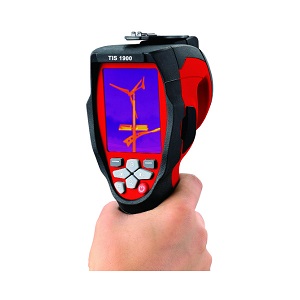The most common use for a thermal imaging camera is in electrical safety inspection. The infrared technology is used to detect unusual temperature changes, which are a clear indication of electrical issues with items such as motors and electrical panels. However, this form of technology is also suitable for other applications, and one of these is detecting water leaks.
When testing for electrical problems the thermal imaging camera is enabling the user to visualise problems that wouldn’t otherwise be detectable, and the same principle applies to searching for damaging water leaks. The thermal imaging camera allows for non-invasive and non-destructive testing, so you don’t have to dig into walls or remove elements of a building’s structure to detect water leaks, you can do this with non-contact testing via a thermal imaging camera.
Why detecting water leaks is important
Electrical problems that are not visible can be detected by a thermal imaging camera and water leaks often cause the same issue. They can build up unnoticed in a building and only become clear and visible when it is too late, ie. the problem has developed to the extent that water is leaking or a structure is damaged. Ideally you want to detect a water leak or excessive moisture as soon as possible so you can deal with the issue before it develops.
Typical sources of water or moisture in a building are of course water leaks from pipework, but also where humidity accumulates, excessive condensation gathers and where precipitation may have access. Unnoticed these issues can grow to cause problems with foundations, structural issues, damage equipment and fabrication, while mould can also cause health issues.
How to use a thermal imaging camera to detect water leaks
Just like electrical issues typically cause an excess of heat which is detectable by the thermal imaging camera, so water leaks cause the opposite situation, they will produce areas of cooler temperatures. So we can point the thermal imaging camera at areas of suspected moisture issues and monitor for minor changes in temperature. Before we do this, it is important to carry out such tests in the right conditions.
- You should have a good understanding of a building’s fabrication and possible moisture sources, so you know where to test and where not to (a change in temperature in an area where moisture is unlikely to be the cause, could be misleading)
- Remove all possible obstructions so the thermal imaging camera has a clear view of the test area
- Understand the thermal imaging camera. Using an instrument such as the THT300 supplied by Test instrument Solutions allows you to change the sensitivity so that minor changes in temperature can be detected
- Make sure there are no fans or air conditioning units running which could affect the accuracy of the reading
Where a temperature drop is indicated by the camera, this could be a possible water source. It is important to note that this is just an indicator, and using a process of elimination and your knowledge of the building’s infrastructure, you can begin to investigate whether there is a water or moisture issue.
It will help to understand that moisture usually spreads in recognisable patterns, ie. down a wall in a triangular shape, more unstructured across a ceiling, and up a wall slowly spreading out if the moisture is coming from the floor. You can follow this kind of pattern with the camera to monitor whether the temperature readings continue as they would if moisture was present.
If you suspect that water or moisture is present, then you can use your schematic knowledge of the building to investigate further and identify the true source, and deal with the issue before it develops into a major structural and safety problem.
Please note that this section is for information purposes only. Anyone using equipment referred to in this section must be suitably qualified and/or experienced within the respective field. If in doubt before use, please consult a qualified electrician or engineer & thoroughly read all instruction booklets.